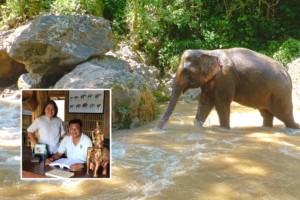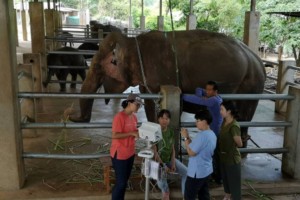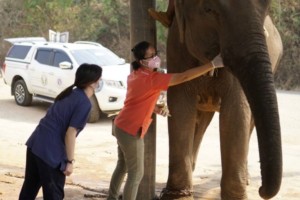Mahouts matter: The Elephant Conservation Center’s essential workers
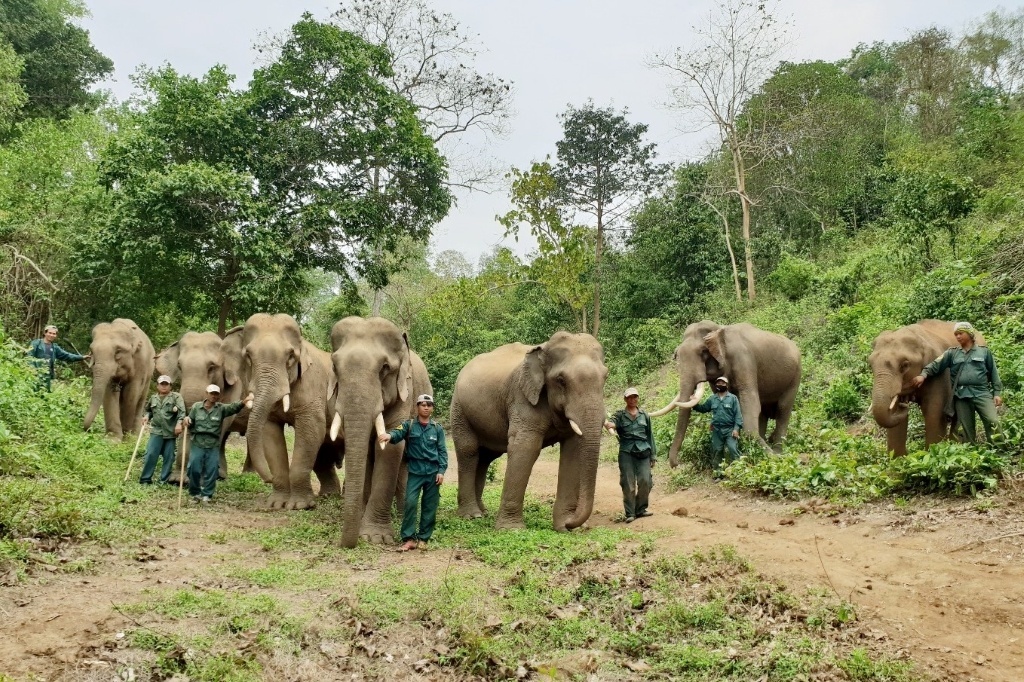
Introductory note by Hollis Burbank-Hammarlund, Work for Wild Life International:
The concept of ‘essential workers’ has been front and centre since the COVID-19 virus struck our world earlier this year. Doctors, nurses, paramedics, as well as teachers, grocery store workers, transportation staff and so many others have been working tirelessly to support essential human needs during the pandemic.
For captive Asian elephants, however, the most essential workers are mahouts — people who work with and tend elephants.
This blog, written by Anabel Lopez Perez a wildlife biologist at the Elephant Conservation Center in Laos, and edited by me, tells the story of their work and underscores the importance of keeping mahouts on the job during the pandemic. Dr Susan Mikota, Dr Janine Brown, and I have chosen to support them through our Elephant Healthcare & Welfare Emergency Lifeline Fund.
The Elephant Conservation Center (ECC) was founded in 2011 with the goal of reintroducing socially coherent groups of healthy elephants to a safe and protected natural forest. Located in Sayaboury province in Laos, the ECC has 530 hectares of forest. It hosts 34 elephants and employs 67 staff, 33 of whom are mahouts. In normal times, the Center is supported by visitors who provide 90% of its total revenue.
But these are not normal times. With the arrival of the COVID-19 virus and the disappearance of tourists, funding to support the ECC’s elephants has dropped precipitously since March of 2020.
Mahouts are essential workers for elephants living under human care
Of critical concern is not being able to pay the salaries of our team of mahouts. They are essential workers, maintaining the integrity of our conservation programs and ensuring the daily care and welfare of our elephants. Their job is particularly important in a free-contact facility like the ECC where people and elephants are often in close proximity to one another.
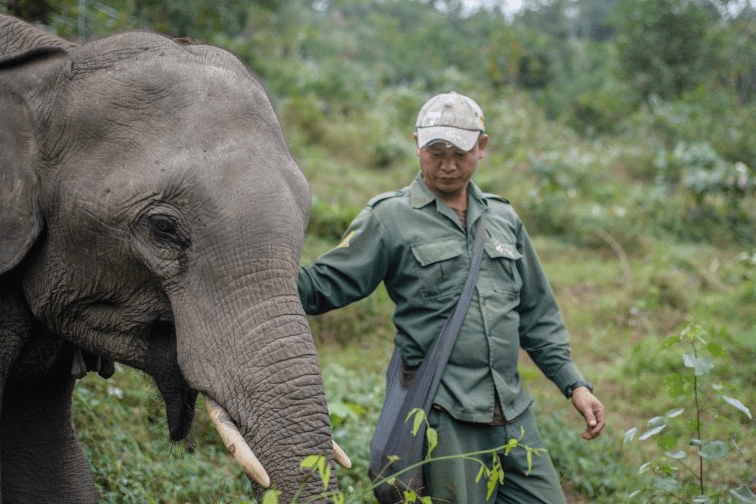
We currently have two pregnant females at our facility. One will deliver very soon. In recent months, we have nervously asked ourselves, “How will we provide the best care for this mother-to-be during the last months of her pregnancy and parturition if her mahouts — the persons she knows and trusts — are not there?”
It is imperative to have good mahouts to monitor the final months of her pregnancy and to properly handle parturition (the action of giving birth). Her mahouts are currently sleeping near her in the forest, keeping a watchful eye on her condition.
We also have nine males at the Center, four of them are juveniles and the rest are adults. Managing male elephants is more difficult and more dangerous than managing females. It is crucial to have experienced and knowledgeable mahouts to properly handle bulls without putting other people, other elephants, or themselves at risk, especially when males go through musth — a condition of heightened aggression and unpredictable behavior in association with a surge in testosterone levels.
How are we going to keep these bulls safe and provide the best care for them if we cannot afford to pay the salaries of our mahouts? How are we going to continue our breeding program if we don’t have mahouts who can safely handle the males? If our males go into musth during the pandemic (we currently have two males in musth), who is going to take care of them during this period if their mahouts are not around?
The remainder of our elephants are females. Female elephants in the wild are always part of a family herd. However, our females are rescued from different working backgrounds so none of them are related to each other.
Our ECC team focuses on facilitating social time for our resident elephants. This ensures individuals have the opportunity to form a cohesive herd and to express social behaviors similar to those in the wild. In this process, mahout cooperation and knowledge of their elephants is crucial. How can we continue to provide social time and the best welfare possible for our females if we don’t have enough mahouts? Very simply, we won’t be able to.
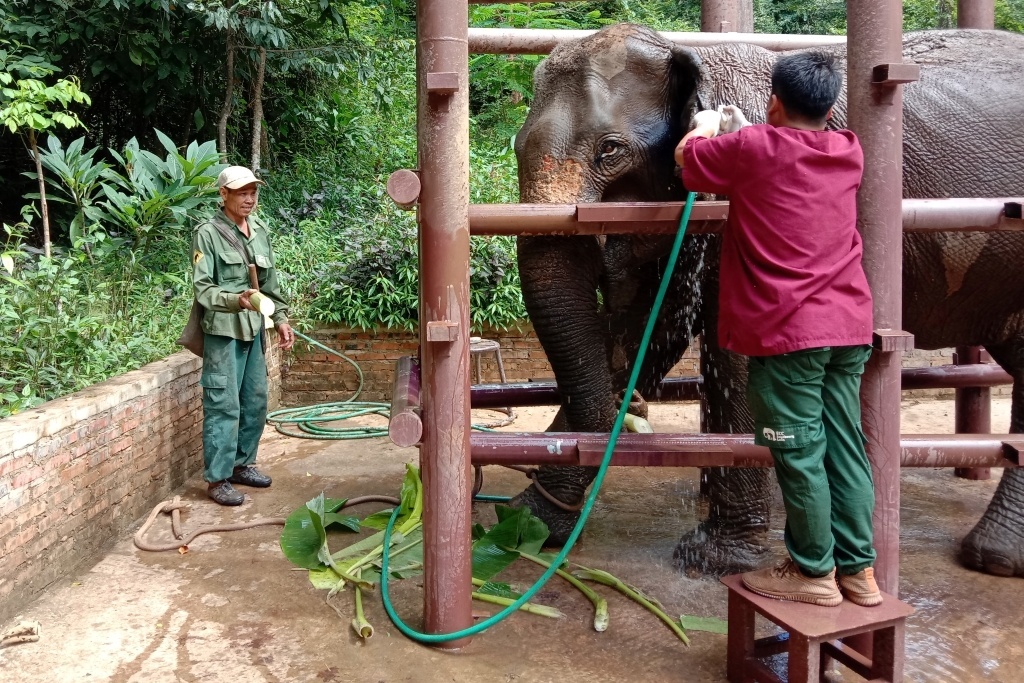
The only hospital for elephants in Laos is located at the ECC; it provides both emergency and routine healthcare. But without mahouts, how are we going to proactively keep our elephants healthy?
Mahouts are the people who know their elephants best. They can detect early wound formation or subtle changes in behavior — such as eating or drinking less, walking slower than normal or with a limp — that signal something is wrong. We need our mahouts in order to notice (in the field) and treat (at our hospital) emerging health conditions before they escalate into major health emergencies.
Mahouts are essential workers for elephants released back to the wild
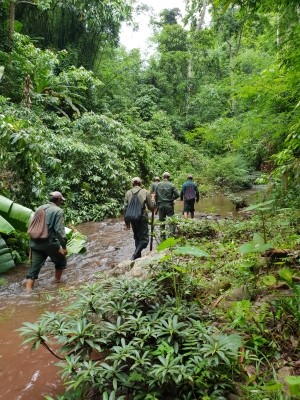
On March 18, 2019 after a lengthy process aiming to target a compatible elephant herd, five elephants (four females and one juvenile male) were selected and released into Nam Pouy National Protected Area. Four of these elephants had been confiscated by the Laotian government after an attempt at illegal trade in 2018.
Our mahouts still track the elephants’ movements four times a week to check that the herd members remain close to one another, to see if the elephants are healthy, and to assess and preempt any situation that might put the elephants or local residents at risk. Without our vigilant mahouts, it will be very difficult to move forward with our release program and to guarantee the safety of the released herd.
Thankful for the lifeline!
We are extremely proud of our mahout team and the important work they do. None of our elephant conservation and welfare efforts (socialization, release, breeding, veterinary care, etc.) are possible without them.
Faced with the uncertainty of the COVID-19 global pandemic, we worry about the months ahead. We worry about not having sufficient funding to keep our mahouts on board. And so, we worry about the well-being of our elephants.
The ECC and its precious denizens cannot afford to lose their mahouts.
Please consider a GoFundMe donation to the Elephant Conservation Center. Thank you for caring! (GoFundMe: https://www.gofundme.com/f/ECCAccelerator)
The ECC team sincerely thanks the Elephant Healthcare & Welfare Emergency Lifeline Fund team for its generous support. They are helping us pay a fair salary to our mahouts and ensure that all our elephants will have the best welfare and living conditions during these difficult times.
Featured image (top of post): ECC’s male elephant mahout team. Image by Anabel Lopez Perez.
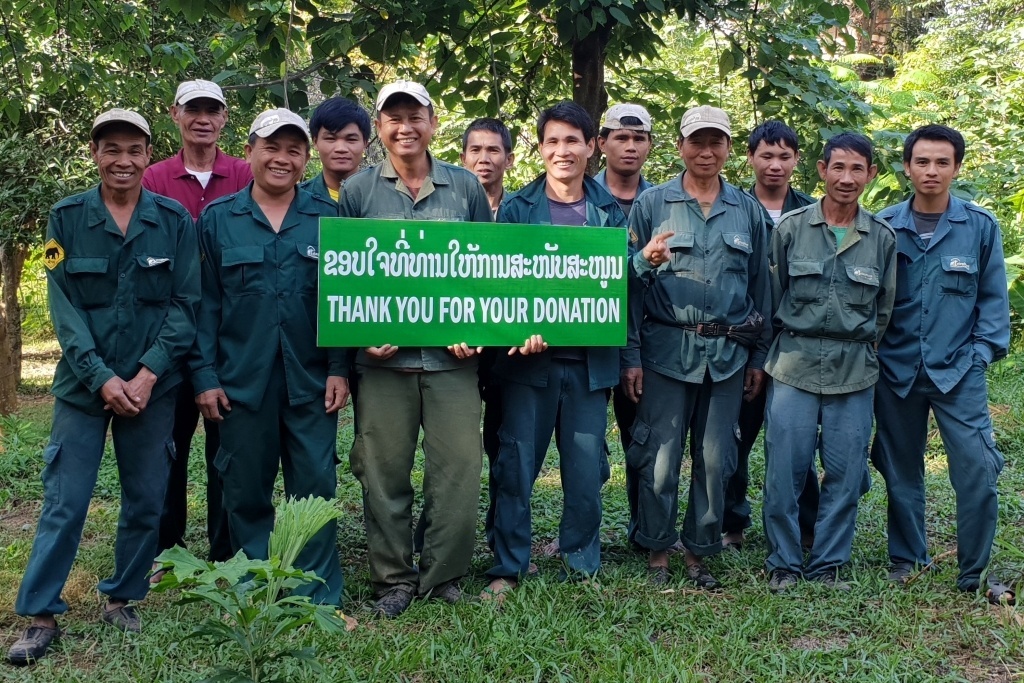
About the author
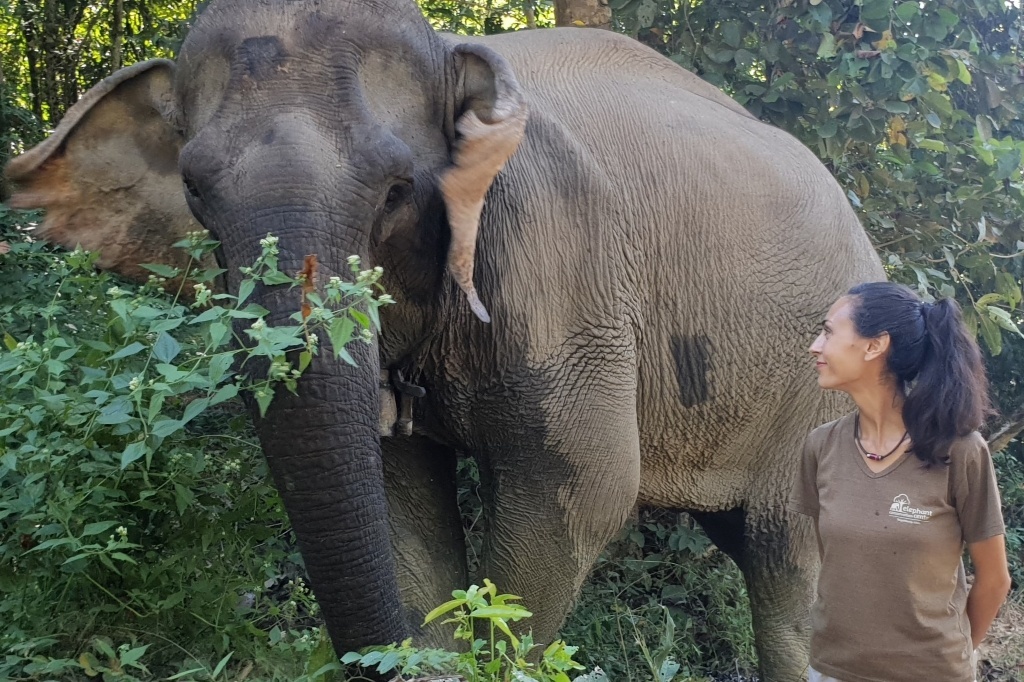
Anabel Lopez Perez is a wildlife biologist at the Elephant Conservation Center in Laos.


